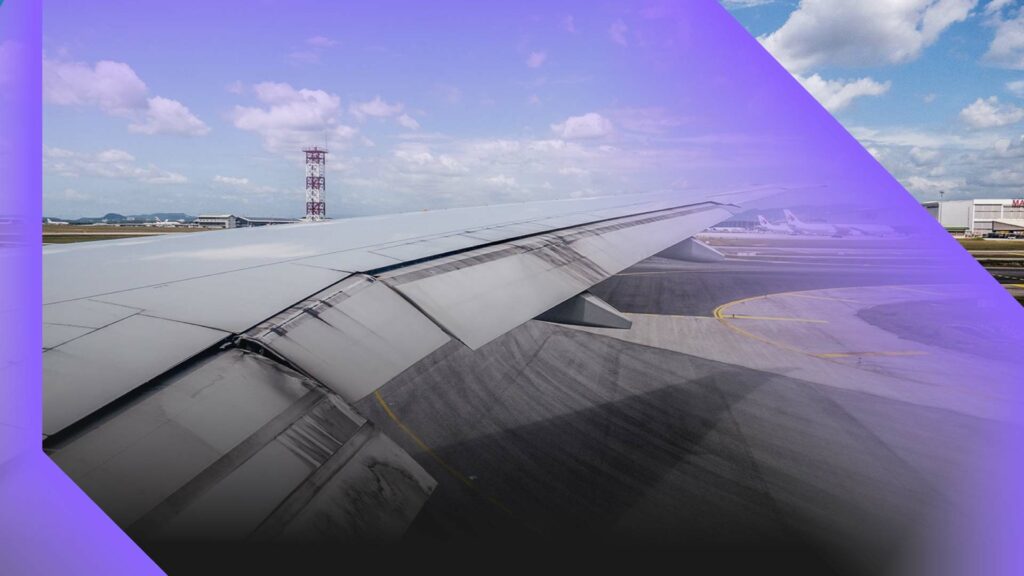- Within a web3 customer loyalty program, customers can earn, own, trade, and redeem rewards instantly
- Web3 can improve customer loyalty in the travel industry by giving customers greater control over their data, more personalised experiences, and enhanced rewards programs
- By leveraging web3 tools and technologies, travel companies can create travel communities where customers can interact, share experiences, and earn rewards, further enhancing customer loyalty
- Tokenisation of loyalty rewards in web3 creates additional value and utility for customers, enhancing their loyalty and encouraging continued engagement
Introduction
Web3, the latest iteration of the internet, is a very hot and current topic of discussion. While still not fully implemented, Web3 is starting to show its potential to disrupt existing trends and systems and create brand new ones.
When it comes to the travel industry, and more specifically, customer loyalty programs, things have been pretty stagnant over the past couple of decades. Air miles and frequent flyer programs are standard fares but haven’t evolved or improved meaningfully. These programs remain highly restricted and centralised, and customers enjoy little or no flexibility.
Web3, with its underlying power to decentralise, tokenise, diversify, and empower the individual/customer thanks to blockchain and other novel technologies, does have a great potential to disrupt customer loyalty programs as we have known them for a very long time.
This article explores the possible applications of web3 to the travel industry, and how web3’s technological traits can improve customer loyalty.
Customer loyalty programs: historical background
The Holiday Inn chain introduced the very first customer loyalty program for the hospitality industry in 1983. Originally dubbed ‘Priority Club’, the idea was to keep customers coming back to Holiday Inn establishments by offering rewards and perks for returning customers (the Priority Club was rebranded as IHG Rewards Club in 2013 when the Holiday Inn chain became InterContinental Hotel Group). The idea took off, big time. Soon, all hotel chains introduced similar programs. (Marriott opened its own loyalty program the same year).
The same goes for the travel industry. United Airlines implemented what can be considered the first ‘modern’ frequent-flyer program in 1972. This early iteration awarded flyers commemorative plaques and promotional material. It wouldn’t be until 1979 with Texas International Airlines’s program that actual mileage flown would be used as the basis for a rewards system for travellers.
Customer loyalty programs: the current state of play
The short historical background above clearly highlights one fact: customer loyalty programs in the travel industry have been around for a long time, and apart from cosmetic and administrative alterations, the core mechanics have changed little, if at all. Over five decades since their inception, they’re overdue for a quantum evolutionary leap.
Apart from revealing how easily a medical emergency can spread around the world (and how unprepared said world was to deal with it), the covid-19 pandemic caused a tectonic shift for many things. From the way people work, to how travel is perceived, there’s a clear before/after. The travel industry collapsed, for starters, with many airlines and travel companies going out of business entirely. In the wake of such era-defining events, customer attitudes changed dramatically, and consequently, existing and long-standing customer loyalty programs became almost obsolete in a relatively short period of time.
The world has now come out at the other end of the pandemic, but brands need to recognise that this is a new era and that they need to adapt and evolve their customer loyalty strategy if they’re to retain/expand their customer base.
This is where web3 can become the key factor.
How can web3 improve customer loyalty in the travel industry?
The web is evolving. Now arguably in its third iteration (web3), the new web is decentralised. Powered by technologies such as blockchain, and leveraging the power of cryptocurrencies, non-fungible tokens (NFTs), and self-sovereign identity (SSI), web3 opens up a whole new constellation of possibilities.
Web3 is all-encompassing, meaning all aspects of the web experience will be enhanced in one way or another. When it comes to customer loyalty programs, web3 can become a great disruptor and innovator. The very nature of blockchain as a secure, transparent, and immutable technology can establish the basis for a far more efficient and customer-centric experience.
Blockchain-based customer loyalty programs benefit in multiple ways:
- Better security: Blockchain technology features cryptographic security, which is way stronger and more robust than security methods found in previous iterations of the web. Furthermore, the native permission management systems found in most blockchains allow for better management of access.
- Transparency: In traditional customer loyalty programs, the customer might not have always been able to view or track their rewards in real-time or at all. This may lead to reduced trust in the brand and the program itself. Blockchain enables real-time tracking and visualisation of rewards.
- Reward portability: Customer loyalty programs have, for decades, worked in siloed form. In other words, the rewards accrued in any given program are only good for that program. The customer cannot move them elsewhere. This restricts freedom of choice and prevents the customer from accessing other ecosystems where their rewards may also yield benefits. Web3 disrupts this paradigm by enabling reward portability, maybe in the form of NFTs, which could be utilised and redeemed across multiple systems. This portability adds an immense amount of value to the rewards, and the brand itself.
- Reduced costs: Smart contracts enable secure, traceable, and transparent transactions that are much cheaper than current bank-based transactions. Blockchain technology eliminates all middlemen, which means the elimination of all the fees taken by all the middlemen along the transaction’s path.
- Frictionless environment: The web3 wallet becomes the centrepiece of the rewards experience. Rewards are credited and redeemed from the same wallet, which creates a very streamlined and efficient rewards journey.
- Freedom to exit the program at any time: Current loyalty programs tend to ‘lock’ the customer into one single provider. This usually means that the customer cannot dispose of the rewards until a certain period of time has elapsed, or certain conditions are met, or both. Within a web3 rewards ecosystem, the customer may be able to sell or trade rewards at any time.
The challenges of implementing web3 in the travel industry
Web3 is a relatively new concept, as are the technologies underpinning it. Consequently, development and implementation are far from standard or battle-tested. There remain many unanswered questions about data privacy, regulatory issues, and of course, adoption.

Let’s look at some of these yet unanswered questions, and some lingering challenges.
Data privacy
The handling of personal information is presently the subject of thorough scrutiny, following several high-profile incidents over the last couple of decades that saw millions of personal accounts become compromised. Data is the lifeblood of the digital age, and so companies must ensure they protect their users’ privacy and comply with all existing regulations.
Web3’s based on the decentralisation and transparency afforded by blockchain technology. But these two factors, while they enable protection against major hacking events, do spark concerns about the privacy of the data being handled. For example, the very nature of blockchain technology means that information cannot be altered or destroyed, once it becomes immutable on-chain. Because of decentralisation, no single authority exists to even take on the responsibility of erasing data, should this become necessary due to legal issues, for example. Such conflict may lead to compliance problems across one or many jurisdictions.
Regulatory issues
While web3 is likely to disrupt many paradigms, the new web must still remain a lawful environment. Any companies, either startups or long-established firms embracing web3 concepts and technologies, must be compliant if they’re to thrive, evolve, and remain in business!
The responsibility to establish a lawful web3 environment is two-pronged: on one side, regulators must create clearly defined frameworks for digital asset management entities, startups, and entrepreneurs to follow and abide by. On the other side, these same entities, startups, and entrepreneurs must implement the necessary measures to comply with regulations. This may require hiring specialised lawyers or firms with a proven track record in the field. Zaisan is one such company, for example.
Adoption
Customer loyalty programs have existed for a long time, as we have seen. Because of this, practices, systems, and sentiments may have become deeply rooted, and the desire to change may be weak, or legacy systems may be hard or expensive to upgrade.
Still, as mentioned above, the covid-19 pandemic did signify a seismic shift in many aspects of life, with travel habits being particularly impacted. Web3’s new technologies may introduce a far more efficient way to manage customer loyalty.
Fierce competition
Following the lead of Holiday Inn, most other hotel chains followed suit and created their own versions. Same goes for the air miles/frequent flyer. Because most hotel chains/airlines use these programs, competition is intense, which means it’s harder for the business to gain new customers or retain existing ones, and it’s even harder for the actual customers to decide which loyalty program to sign up for.
Shifting customer preferences
Another considerable challenge is the always-changing customer preferences. Times change, and so do market trends, and consequently, customer behaviour. The pandemic only accelerated these issues, but this evolution is largely unavoidable, so it’s up to the brands themselves to adapt their programs to new trends, choices, and needs. For example, customers may want experiences tailored to them based on the personal information provided. Customers may choose one brand over another if said brand is able to offer personalised experiences and rewards, for example, rather than a ‘one-reward-fits-all’ approach.
Examples of real-life Web3 cases in the travel industry
Though web3 is still an evolving concept, some companies actively embrace its potential and make significant strides in integrating web3 technologies into the travel industry. Here are a few real-life examples of companies that are leveraging web3 in travel environments:
- Chain4travel: Chain4travel has developed Camino, a web3-powered travel ecosystem that utilises blockchain technology. Camino aims to create a decentralised marketplace where travellers can book flights, accommodations, and other travel services directly with providers, cutting out intermediaries and reducing costs.
- WindingTree: WindingTree is a blockchain-based platform that builds decentralised solutions specifically for the travel industry. By leveraging web3 technologies, WindingTree aims to facilitate direct connections between travel suppliers (such as hotels and airlines) and consumers, eliminating the need for traditional intermediaries and reducing fees.
- TravelIX: TravelIX focuses on tokenising airline tickets, providing a web3-based system for digitising and managing flight bookings. By tokenising airline tickets, TravelIX aims to enhance the travel industry’s transparency, security, and efficiency. This approach allows for seamless ticket transactions and provides travellers with greater control over their bookings.
These companies exemplify the growing interest and exploration of web3 technologies in the travel industry, demonstrating the potential for enhanced efficiency, transparency, and customer experiences through the adoption of web3 principles.
Conclusion
The web is evolving, and will probably keep evolving for as long as the web exists. Web3 is the next iteration, bringing blockchain-based technologies and decentralisation to the ecosystem.
The travel industry (and by extension, customer loyalty programs) may benefit greatly from these technological advances. Web3 can improve customer loyalty by giving customers greater control over their data, more personalised experiences, and enhanced rewards programs, for instance.
But these are just some of web3’s potential applications for the travel industry. Blockchain remains a relatively new technology, and its adoption is still far from widespread in this particular sector. Future use cases may involve blockchain-based digital passports or tokenised rewards. The bottom line is that web3 is here. The technology is happening, and the travel industry can only become better because of it.




